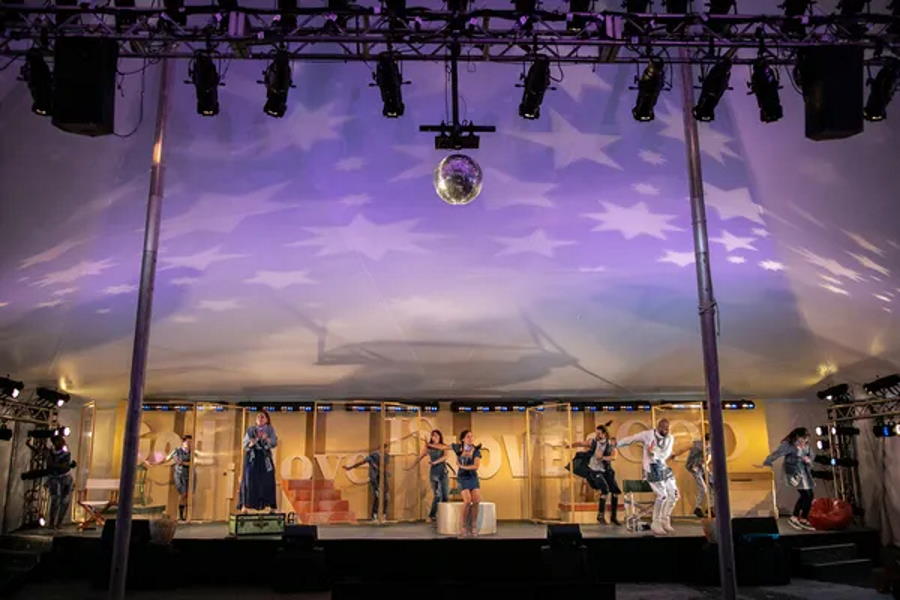WASHINGTON, D.C.: The National Endowment for the Arts (NEA) has released a 42-page document called “The Art of Reopening,” a guide to current COVID-19 practices among arts organizations. The NEA conducted in-depth interviews with nine arts organizations to identify common practices among those who have successfully reopened their doors to audiences or visitors during the pandemic. In addition to these case studies, the NEA also drew from national service organizations in the arts, document scans, and interviews with arts management consultants.
Theatre organizations interviewed for the guide include American Shakespeare Center, GALA Hispanic Theatre, and Berkshire Theatre Group. The document also includes information from Cincinnati Ballet, Americans for the Arts, Sidewalk Film Center and Cinema, AEA Consulting, True Concord Voices & Orchestra, TDC, Houston’s Museum of Fine Arts, Lied Center for Performing Arts, and Adirondack Center for Writing. Surveyed groups include Theatre Communications Group, Theatre for Young Audiences/USA, Association of Performing Arts Professionals, and National Association of Latino Arts and Cultures, as well as a number of writing, orchestral, choral, and museum organizations.
The guide’s executive summary noted six common practices among arts groups that “successfully have reopened their doors,” and key lessons learned:
- “Strengthen ties with your immediate community.” The NEA notes the importance of aligning arts programming with the needs of an organization’s local community, including offering a mix of virtual, indoor, and outdoor programming opportunities. One example is the effort of Lied Center for Performing Arts in Lincoln, Neb., which brought a mobile music stage to neighborhoods throughout the city.
- “The doctor is ‘in’—or should be.” One step that many theatres have taken, the NEA noted, is to identify a public health professional or team to advise them on reopening strategies.
- “Isolation? More like ‘quality time.'” Referring to some of the strategies used by American Shakespeare Center, the NEA highlights the use of artist pods or “bubbles.” The executive summary points out that this isolation can seem severe and takes extensive effort to maintain, but it also can offer greater confidence to all involved and foster a sense of solidarity among the artists.
- “The unexpected will continue to happen. Be transparent when it does.” This section emphasizes the importance of adapting quickly and communicating effectively. As Berkshire Theatre Group’s Nick Paleologos notes, that includes working “transparently and cooperatively” with unions and public health officials, because, “in the end, it’s better to comply than not have a good solid relationship with your local officials.”
- “First principles matter. They can restore a sense of shared purpose for artists, staff, partners—and donors.” The NEA here notes the value of regrounding an organization in its original mission and artistic vision, which can lend vitality and momentum to reopening strategies. One example presented is the Adirondack Center for Writing, which experienced an outpouring of support and gratitude after emailing poems written by regional poets directly to subscribers. The organization also sent out weekly writing prompts. In addition to being a calming and reassuring program for their patrons, the NEA notes, the program also led to generous donations.
- “Bring that videographer along for the ride!” As Susan Nelson, executive vice president of the Boston-based consulting firm TDC, points out, arts organizations are in agreement that thinking digitally is not a short-term holdover solution. Partnering with a media or tech organization (or even a tech-savvy artist) can help find ways to reach broader audiences. The report notes that the emphasis on digital goes beyond the performance itself. The continuing enhancement of supplemental production content, like interviews and artist talks, will continue to be key aspects as arts organizations reopen.
The full 42-page guide, which includes numerous examples and breakdowns for all of the above points, can be found here.


